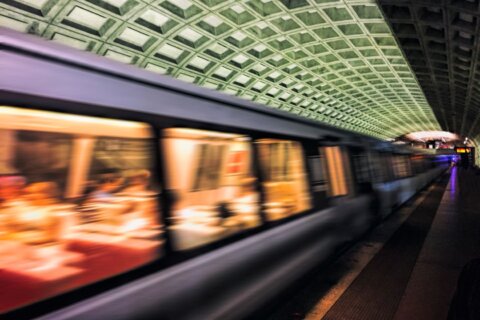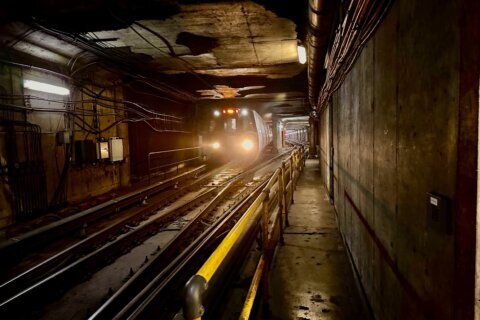There’s still no update on when Metro will restore regular service after the investigation into the Blue Line derailment earlier this month resulted in yanking more than half of Metro’s fleet of rail cars out of service.
But Metro officials are discussing plans to incrementally put older trains back on the rails and promising to communicate with riders about service levels and other issues by holding daily briefings.
As it stands now, Metro is running a reduced schedule through Oct. 31 after sidelining all of its 7000 Series cars due to the derailment. That means trains will run every 15 to 20 minutes on the Red Line and every 30 to 40 minutes on all other lines.
Metro General Manager Paul Wiedefeld said Monday during a briefing that Metro is working on plans to put more 2000 Series and 3000 Series rail cars — which date to the 1980s — back into service after they’ve undergone the necessary inspections.
As of last week, more than 100 of the oldest rail cars were not currently in service, according to Metro.
The plan going forward, Wiedefeld said, is to add five train sets daily to Metro’s service as the older rail cars are inspected and put back into service.
Returning 6000 Series rail cars into service — which were pulled after two incidents where rail cars came uncoupled last year — is also a high priority, he said.
It’s currently taking about two weeks to return one 6000 Series train to service, partly because of constraints with finding parts, Wiedefeld said.
As of late last week, just 22 of 180 6000 Series rail cars were in use.
Wiedefeld also discussed the initial plans for eventually bringing the 7000 Series — which were ordered sidelined by the Washington Metrorail Safety Commission — back into service.
In order for the rail cars to come back, the safety commission has to approve plans by Metro for inspecting the rail cars’ wheels and axles. Wheel and axle misalignments on 7000 Series cars are believed to have caused the Oct. 12 derailment.
The “root cause analysis” of what is causing the axles to come out of alignment remains ongoing.
In emergency inspections carried out after the derailment, Wiedefeld said inspectors have identified 18 additional axles that are out of alignment.
Wiedefeld said Metro is still in the very beginning stages of coming up with a plan.
On Tuesday, Metro officials will meet with NTSB investigators, the manufacturer Kawasaki and the Washington Metrorail Safety Commission to get a better look at the wheel issue at the factory in Pennsylvania and at the rail yard in Greenbelt, Maryland.
“One of the first steps is basically to take a look at these … wheelsets that were not conforming, both at their plant, and also at our yard,” Wiedefeld said.








